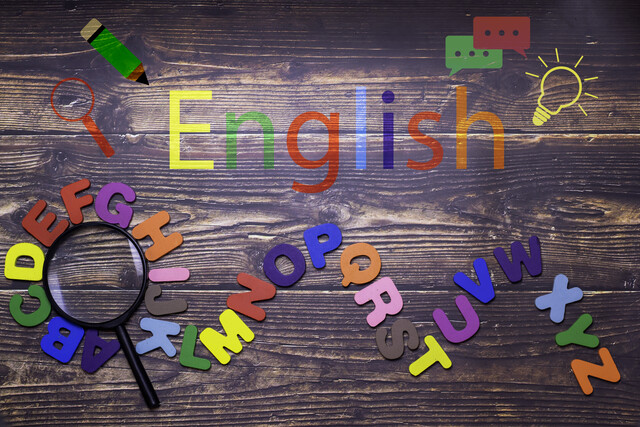How to choose and prepare songs for the classroom
Using songs in a classroom lesson can be a great change of pace for the students. But it doesn't have to be a change of pace; you could use songs regularly to teach grammar. The important thing is that you do it in the right way.
We will review everything you need to do before and during the use of a song in a classroom lesson.
To choose a song for the classroom, find a song that uses the grammar that matches your classroom objectives for the day. For example, the following songs have a mix of modals in the lyrics:
"It Must Be Love" by Madness
"Green Eyes" by Coldplay
"Could You Be Loved" by Bob Marley
Make sure the singing and words are clear in the song. A song might have perfect lyrics but if they can hardly be heard it's not a good song for teaching.
Go over the lyrics and be prepared to teach all the vocabulary in the song. Always have a handout with the lyrics for your students.
Check for any words in the lyrics like "gonna" and teach this as a written form of "going to" that is used in song lyrics but used in writing otherwise. (This can also be a part of a class on pronunciation, since "gonna" is a common pronunciation for "going to.") Same for lyrics with "wanna," "gotta," etc.
If the song has a long solo break in the middle, you can use the time to ask for answers to the comprehension questions that you have given the students. (See details about that below.)
If the song is long and just repeats itself at the end, you can turn it off early the first or second time. But you can play the whole thing if have students sing along with the song at the end.
A Lesson Plan with a Song
Now we will go over exactly how to do it in detail in a lesson plan.
We will use "It Must Be Love" by Madness as an example of teaching modals with a song.
Presentation
In using any song, the first thing you do is teach the most necessary vocabulary in the song. Song songs will have too many new vocabulary words to present in one classroom lesson, so focus on the words that are most important to student comprehension of the song and the words used with the grammar parts of the song that you are teaching.
After teaching the vocabulary, you present the grammar target of the day. One example of modals from the Madness song is
How can it be that we can say so much without words?
So before the song you would teach:
How can it be? = I don't understand.
I don't understand how it can be.
How can it be that you are not finished? I don't understand. You worked all day.
How can it be that you never do your homework?
And then:
We can say so much without words.
When I look in your eyes, I understand you.
And so:
How can it be that + we can say so much without words?
You don't have to present every problematic line from the lyrics, just the grammar they are based on. But prepare the students for this grammar in any song you use; in the Madness song, there is also would, must and could.
Practice
Practice 1
After presenting all the vocabulary and the grammar, have the students listen to the song the first time without the lyrics and answer one or two questions based on the lyrics.
Write these questions on the board before you play the song, and also write the title of the song.
For the Madness song above, it might look like this:
"It Must Be Love"
What did he never think? (He never thought.what?)
What does he know every day?
What couldn't he be, any other way?
After the first listening, ask the class for answers and write any and all answers you get, right or wrong.
Practice 2
Give the students a handout with the lyrics, but with blanks instead of some of the words. You can choose which words to be blanks based on the vocabulary and grammar targets of the lesson.
Then have the students listen to the song the second time with lyrics that have blanks so they have to fill in the blanks.
After the listening go over the blanks and answers with the students.
Have the students look at the lyrics and answer the first two questions on the board, see if they were right the first time.
Practice 3
Have the students spot the grammar that you are teaching that day. In this example, have the students underline every modal they can find in the lyrics.
Write these sentences on the board. Ask the students questions to see if they understand the sentences. Analyze them with the students, giving other examples with the same form, to help them understand.
Production
-The Production can be the students singing along with the song (if they're willing) or otherwise just reading the lyrics aloud, a line at a time. In addition, Lesson 17 provides many activities for practicing modals.
Now that we have explored in detail how to use a song in a lesson plan, we will change gears and talk about the future.
The Many Ways to Talk about the Future
Here is an interesting activity that you can do in higher level classes, and it can help you as a teacher to understand the many aspects of how to express the future.
I sometimes show the students all the forms that a simple sentence about the future can take:
Simple present: I have a meeting tomorrow.
Present continuous: I am having a meeting tomorrow.
Simple future with will: I will have a meeting tomorrow.
Simple future with shall: I shall have a meeting tomorrow. (UK English)
Simple future with going to: I am going to have a meeting tomorrow.
Future continuous: I will be having a meeting tomorrow.
This goes to show that tense does not always equate to time. We explored this concept a bit in past lessons.
When and how to present these different forms depends on the level and ability of the class, your choices as a teacher, your textbook or syllabus, etc.
For example, a class on simple present for beginners would focus only on present tense uses (daily activities, facts etc.) We would never confuse beginners by mentioning that this form can also be used for the future; we save that for later.
But an intermediate class on the present continuous might mention that it can be used both for actions at the moment ("We are having a party right now") and the future ("We are having a party next weekend.")
Again, it depends on the students' ability, your choices, etc.
Some More Ideas for Realia in the Classroom
We have touched on using realia quite a bit in this course. Here are some additional idea and activities for realia that you can use in teaching grammar.
Functional lessons: We often use functional lessons both to teach a form of grammar and to provide students with practical exercise in real-life situations. Some ideas for realia in functional lessons include:
-Menus used in a lesson on ordering in a restaurant and for teaching grammar concepts such as the present simple, modals ("I would like."), adverbs of frequency ("I never order the. I usually get the."), future simple ("I will have the..") etc. Many restaurants give menus away and are happy to provide them; you can also print menus off the internet.
-Travel brochures are also readily available and can be used to teach a wide variety of English grammar such as comparisons ("Paris is more exciting than Dallas"), almost any tense ("I went to Paris, I am going to Paris, at this time next year I will have been in Paris."), role playing that practices modals ("What should I do in Paris? You must visit the. You shouldn't go to the."), etc.
-Student's own realia can be used in a fun exercise by having the students empty their purses, book bags and pockets and then having the students talk about the objects. This realia lesson could be used for teaching grammatical constructions such as "It is for." and "It is used for.", future simple ("I will use this to."), the present perfect ("I have used this key for two years,") past simple ("I used this key this morning when I drove my car"), and comparisons ("She has more things in her purse than I do," "He has the most stuff in his book bag").
Switching gears again, let's talk about broken English.
International or Euro English
International or Euro English refers to varieties of English spoken around the word that depart from standard English usage.
We will explore this subject specifically as it relates to teaching of the present perfect, which we covered in Lesson 18.
There are the students who might acknowledge the existence of the present perfect but never use it. And in International or Euro-English, this is starting to be used as its own variety of English.
This is the English used between two non-native speakers of English; for example, a German and an Italian. Chances are, they will not use the Present Perfect in their conversation, and will in fact be speaking incorrectly and ungrammatically, but they will understand each other and neither will notice the technical mistakes.
The German might say "Were you in Germany?" or "Did you go to Germany?" when the meaning he is conveying is "Have you been in Germany?"
The Italian might reply "I did not go to Germany" instead of "I have not been to Germany." And both merrily proceed with their conversation, never knowing how jarring it sounds to a native speaker.
I confess that when some of my European students who live in Europe have told me about their own experience of using Euro-English this way, I have told them that it's in some ways okay.
I have told students this because they were feeling blocked and uncomfortable in their attempts to learn and use the present perfect. They were otherwise very good communicators with the skills and vocabulary they needed to, in fact, talk very well.
If they're struggling with the present perfect, I tell them that it's better for them to speak freely in a relaxed way using this Euro-English when the person they're speaking to is also speaking that way and they both understand each other.
That's probably a cardinal English-teaching sin on my part, but so be it.
However, I do always tell them that they must learn it for times when they talk with a native speaker, for written communication in emails etc. and also in order to speak correctly with their friends or colleagues in London or wherever.
And if you are teaching English in an English-speaking country, none of the above about Euro-English applies.
Students will have to learn the present perfect, how to use it and understand it, and how important it is in order not to go around speaking broken English. It might be hard, but you're doing your students a favor by teaching this grammar in the right way.
This leads us to the subject of when not to correct students.
Overcorrection
In this course, we have covered a lot of ways while teaching English to guide students onto the right path
Now let's talk about how you must be careful not to overcorrect.
Overcorrection is the phenomenon of interrupting your students too frequently while they are practicing their new English skills. Overcorrection can lead to frustration on the student's part. A good teacher works to find the fine balance between failing to correct when necessary versus overcorrection.
As a rule of thumb, if you understand a student, the pronunciation is probably okay and you don't need to correct him or her, at least at that moment.
Focus on "good enough" pronunciation as opposed to some ideal of perfect pronunciation. If the students are speaking English and doing quite well but with a few small pronunciation issues, let them speak. Fine-tuning can come later.
Don't correct for minor accent issues. Many students are self-conscious about their accents when they should not be. In this case, you should tell them that accents are not a problem and that in fact everyone has some kind of accent, even native speakers.
Think of a conversation between a Texan, a native New Yorker and an Irish person; all native speakers, but all with strong accents.
Also consider the fact that on the international news programs we can hear world leaders and experts from all around the globe who all speak English with strong accents and it's not a problem. Tell your students that communication is the key, and don't give them cause to worry about unimportant accent issues.
An accent is only a problem when it is so strong that the speaker is not understandable.
The Shah of Iran was once on the TV news show "60 Minutes" and he mispronounced "important" so that it sounded like "impotent." That's a good example of when mispronunciation is a big problem.
Many accents will cause speakers to put the stress on the wrong syllable of a word. Sometimes this makes little difference and it's no problem, but if your student is saying "impotent" instead of "important" or doing something similar, it's time to jump in and do an intervention.
When you do focus on pronunciation, make sure you focus on the pronunciation issue that is the point of the class.
For example, in a class on irregular verbs, don't interrupt the proceedings just because a student makes an unrelated and small pronunciation error, as in saying "fifteen" when she should have said "fifty". Save that for another day, for the class on numbers.
Overcorrection does not only have to do with pronunciation. Sometimes a student will make a grammatical mistake that is totally unrelated to the grammar point you are teaching. In that case, you might also want to ignore it for now, note it, and get back to it later.
For example, let's say you're teaching a class on the grammar related to using "will." Students are doing an exercise and one student says "I will take the bus because my car is broke."
If it's in the middle of an exercise and everyone is doing well using "will," I would not stop the class because the student said "broke" instead of "broken."
I would note it and maybe plan a class for using past participle to modify a noun as soon as that is appropriate. Or at the end of class I might just write the correct sentence on the board and review it with the students so they are exposed to the correct usage.
There is another reason to not over-correct a mistake when it is not related to the grammar subject of the classroom lesson. When a student is speaking as part of class, interrupting them over small mistakes not only blocks the main thing you want the student to do (to speak freely in English), it can diminish a student's self-confidence.With some students, their number one problem is confidence. A happy and relaxed student who's having fun in class, and therefore gaining confidence, is going to make progress much more quickly than a student who feels afraid to make mistakes.






















